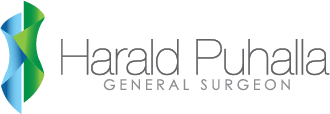advanced medical center
Diagnostic
Diagnostic imaging techniques
Bariatric Surgical Procedures
Various imaging techniques are used to screen organs in the body.
Ultrasound (US): Ultrasound utilises ultrasonic sound waves and the computer creates an image of the organs examined from the reflected ultrasound waves. This test is good at assessing the gallbladder or bile ducts for stones and can detect initial evidence of a liver or pancreas tumour.
Computer Tomography (CT): For this test, X-rays are used and a computer-generated cross-sectional image of the body is formed. In case of underlying cancer the CT helps to assess how far the cancer has advanced, how many tumours there are, how large the tumours are and whether they can be surgically removed.
Magnetic Resonance Imaging (MRI): MRI uses magnetic rays. This test, similar to CT, can provide very detailed images of liver and pancreas tumours.
PET (Positron Emission Tomography): This technology utilises the fact that most cancer cells are more active than other cells. This causes the cancer to absorb sugar more rapidly than normal cells. A small dose of radioactive sugar is injected into a vein and areas of tumour cells are highlighted on the PET scan. PET can be used in combination with CT scans.
Upper Gastrointestinal endoscopy/Colonoscopy: A specialist (gastroenterologist or surgeon) examines the lining of the oesophagus, stomach and duodenum (Upper GI endoscopy) or large bowel (colonoscopy) using a flexible tube with a camera at its tip. Tissue biopsies can be taken during the procedure via the endoscope. For upper gastrointestinal endoscopy or colonoscopy the patient is under sedation. In case of suspicious liver lesions, this test is often used to screen for the primary cancer location.
Endoscopic Ultrasound (EUS): A specialist (gastroeneterologist) puts a flexible tube through the oesophagus, stomach and the top part of the small intestine. On the tip of the tube is a small ultrasound probe which creates imaging of the intestine and specifically the pancreas. If necessary tissue samples can be taken from lesions in the stomach or pancreas. For this procedure the patient is under sedation.
Endoscopic retrograde cholangiopancreaticography (ERCP): A small flexible tube is advanced into the top end of the small intestine (duodenum) to view the bile ducts, gallbladder and sometimes the pancreatic duct. X-rays are used during the ERCP to help visualising the structures. Minor surgery can be carried out during an ERCP. For this procedure the patient is under sedation.
Laparoscopy (key-hole surgery): Laparoscopy can be used to avoid unnecessary more invasive surgery in selected patients. A camera (laparoscope) is passed via a small incision into the abdomen to view the liver and surrounding organs. Instruments can be inserted to take tissue biopsies. Laparoscopy is done under general anaesthetics.
Biopsy/ cell samples: This is a small sample of tissue or fluid from the tumour site, which is sent to a pathologist to examine under a microscope. In general a biopsy is not performed as a first test in liver lesions as we can usually determine the diagnosis by using several different imaging techniques. In pancreatic or bile duct tumours biopsies are more likely to be used.
Patient experience
Infection prevention
High-risk procedures
Quality of care services
why choose us
We always ready for a challenge.
get better health
Et ligula ullamcorper malesuada proin libero nunc consequat interdum varius. Proin sagittis nisl rhoncus mattis rhoncus urna. Convallis aenean et tortor at.
lisenced doctors
Lacus laoreet non curabitur gravida. Laoreet id donec ultrices tincidunt arcu. Egestas diam in arcu cursus euismod quis viverra nibh cras. Elit sed mi sit amet commodo quis.
24 hours service
Nunc non blandit massa enim nec dui nunc mattis. Viverra nam libero justo laoreet sit amet cursus sit amet. Nunc sed augue lacus viverra vitae congue eu.

general questions
Frequently Asked Questions
What are the visiting hours/ restrictions for patients?
Et ligula ullamcorper malesuada proin libero nunc consequat interdum varius. Proin sagittis nisl rhoncus mattis rhoncus urna. Convallis aenean et tortor at.
What are patient rooms and dining like?
Lacus laoreet non curabitur gravida. Laoreet id donec ultrices tincidunt arcu. Egestas diam in arcu cursus euismod quis viverra nibh cras. Elit sed mi sit amet commodo quis.
Why do I need to bring my insurance card to each visit?
Nunc non blandit massa enim nec dui nunc mattis. Viverra nam libero justo laoreet sit amet cursus sit amet. Nunc sed augue lacus viverra vitae congue eu.
How can I help expedite my registration process?
Nunc non blandit massa enim nec dui nunc mattis. Viverra nam libero justo laoreet sit amet cursus sit amet. Nunc sed augue lacus viverra vitae congue eu.
How can I help expedite my registration process?
Nunc non blandit massa enim nec dui nunc mattis. Viverra nam libero justo laoreet sit amet cursus sit amet. Nunc sed augue lacus viverra vitae congue eu.
What are patient rooms and dining like?
Lacus laoreet non curabitur gravida. Laoreet id donec ultrices tincidunt arcu. Egestas diam in arcu cursus euismod quis viverra nibh cras. Elit sed mi sit amet commodo quis.
What are the visiting hours/ restrictions for patients?
Et ligula ullamcorper malesuada proin libero nunc consequat interdum varius. Proin sagittis nisl rhoncus mattis rhoncus urna. Convallis aenean et tortor at.
Why do I need to bring my insurance card to each visit?
Nunc non blandit massa enim nec dui nunc mattis. Viverra nam libero justo laoreet sit amet cursus sit amet. Nunc sed augue lacus viverra vitae congue eu.
Visit Us
opening hours
- monday, Tuesday, Thursday, Friday
- Wednesday
- 8:00 am - 4:30 pm
- 8:00 am - 2:30 pm
- Saturday - Sunday
- Closed





